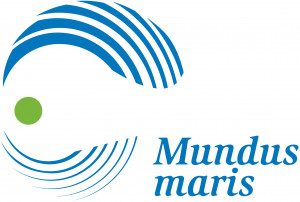Frederico Füllgraf, Santiago de Chile, for Mundus maris
With its 4,000 kilometers of coastline, Chile is, ahead of Japan, the sixth largest fishing industry in the world, but the world’s third largest producer of farmed salmon. The industrially guided salmon farming is concentrated on the coast of Chilean Patagonia with an area of 19,893 hectares of marine concessions from the state and annual sales of 2.0 billion Euros. Ever since 2008, salmon farming in Chile is, however, in the crossfire of criticism.
The government is accused of undue tolerance in relation to the industry’s circumvention of the already lax environmental laws; transnational corporations are criticized for unecological management, incl. the systematic pollution of the southern Chilean Sea with viruses, hormones and industrial waste – a scenario for much needed intervention that contradicts the sustainability proclaimed and which was completely concealed at the maritime conference “Our Ocean” in October 2015 and now culminating in the recent environmental disaster of Chiloé.
After several years of residence in Chile – first as development worker, later as a journalist – Wilfried Huisman became aware of the salmon farming economy in Chilean Patagonia and turned the 2010 premiered television documentary “Salmon Fever”.
In the very first minute of film, the audience is confronted with contrasting images shifting between a Patagonian summer idyll and underwater farms in Chile where up to 200,000 salmon can be crammed together in a single cage – twice the permitted stocking rate in Europe.
Next we see low-light images of a diver scanning ahead with his hands on the muddy seabed in southern Chile glancing through turbid water. We listen to the comment of Chilean professional diver Cristian Soto: “Torn fishnets, rubber hoses, batteries, tires …” – tons of industrial waste with food remnants and faeces of farmed fish form a highly toxic mixture “that kills the marine flora and fauna” warns Soto.


The Seafood We Eat activities
- Win Big – Baltic Event
- World Food Day 2024, Joint Webinar with Fish Party
- UN Special Rapporteur on the right to food
- EP Hearing on EU Citizen Initiative to stop shark finning
- Keynote at the ‘Feed the Future – Innovation Lab for Fish’
- FAO webinar ‘Small, low-cost fish: from bait to plate’, 15-16/02/2021
- Enjoy delicious and sustainable seafood with Mundus maris workshops
- Chiloé, or: The disasters of Salmonopoly
- Seafood Symposium – From Fisheries to Foodies, 27 April 2015
- Baltic students concerned about sustainable foods, Rogow, Poland, 15-19 April 2015
- From plates to fuel – the controversial seaweed boom in Chile
- Khazan – Traditional coastal zone management in Goa, India
- Environmentally conscious consumer behaviour in food – what can I do?
- Save baby fish or Point ‘n’ kill?
- “Inseparable” – Fish sustainability campaign celebrates event in Athens
- Respect for minimum fish size. What do Senegalese fish mongers have to say?
- The Mundus maris campaign in the urban markets in Dakar
- Let’s save the Oceans! – Cercle Europa invites
- International Study Group Brussels: Save the Seas!
- Mercado San Miguel in Central Madrid






